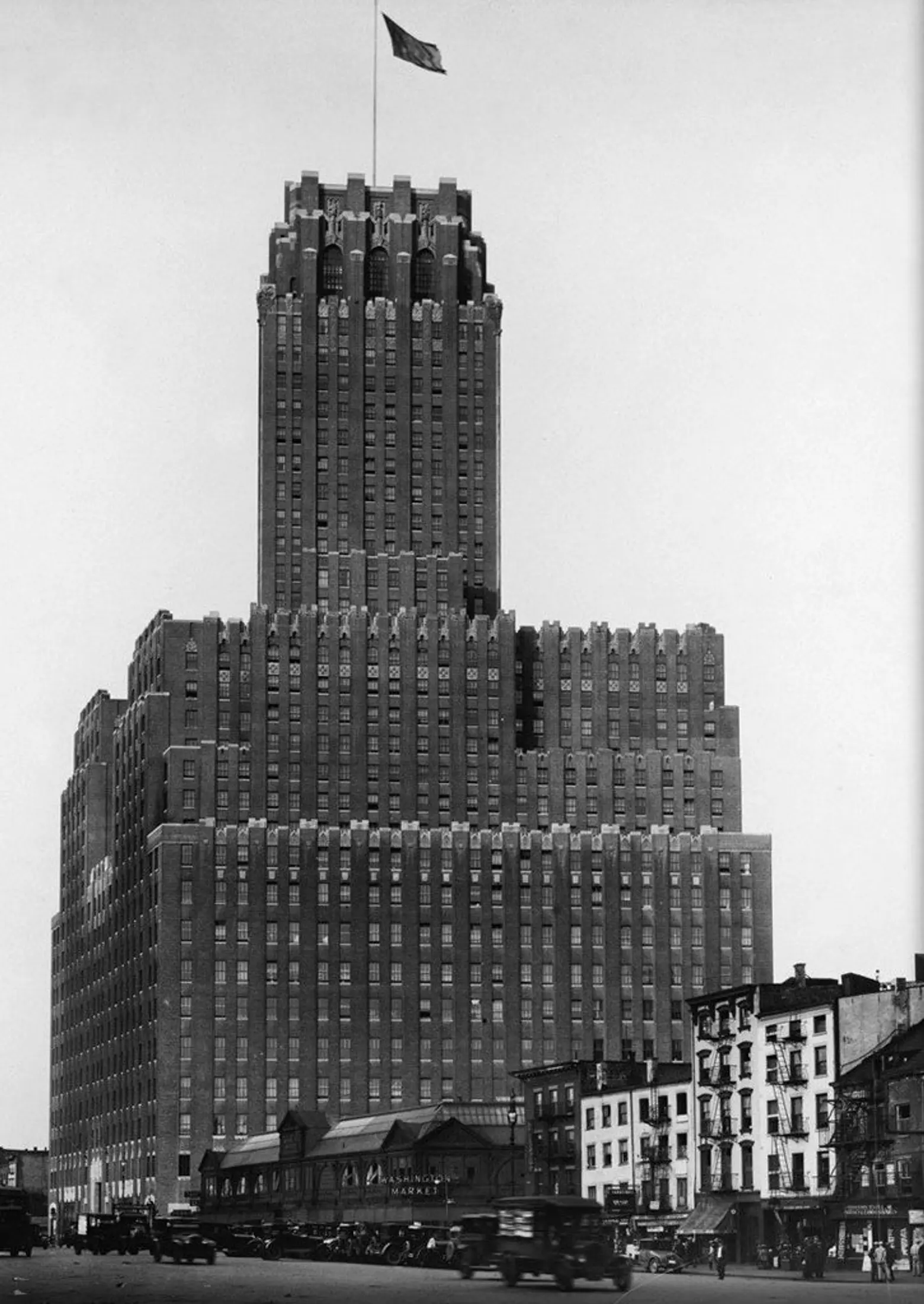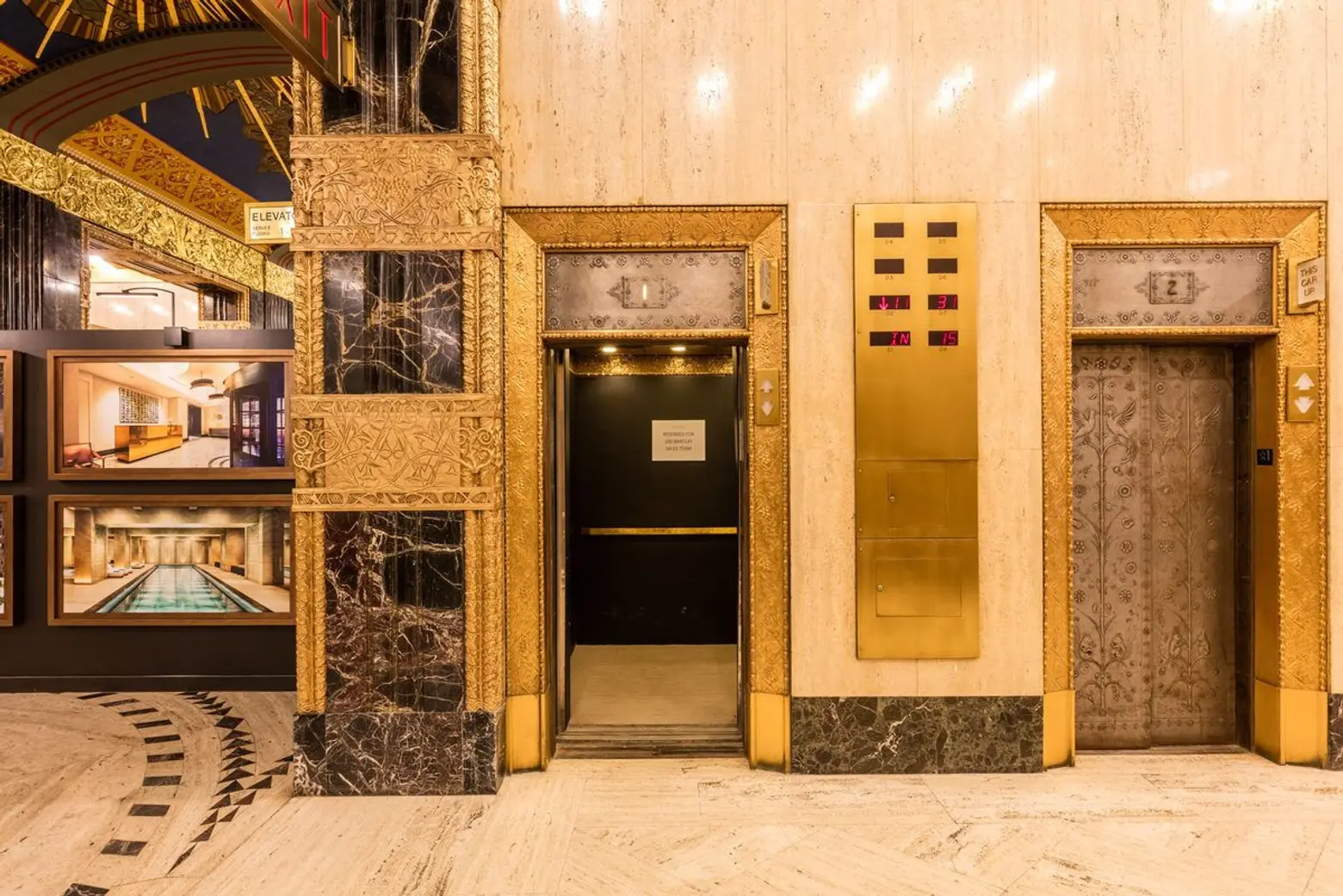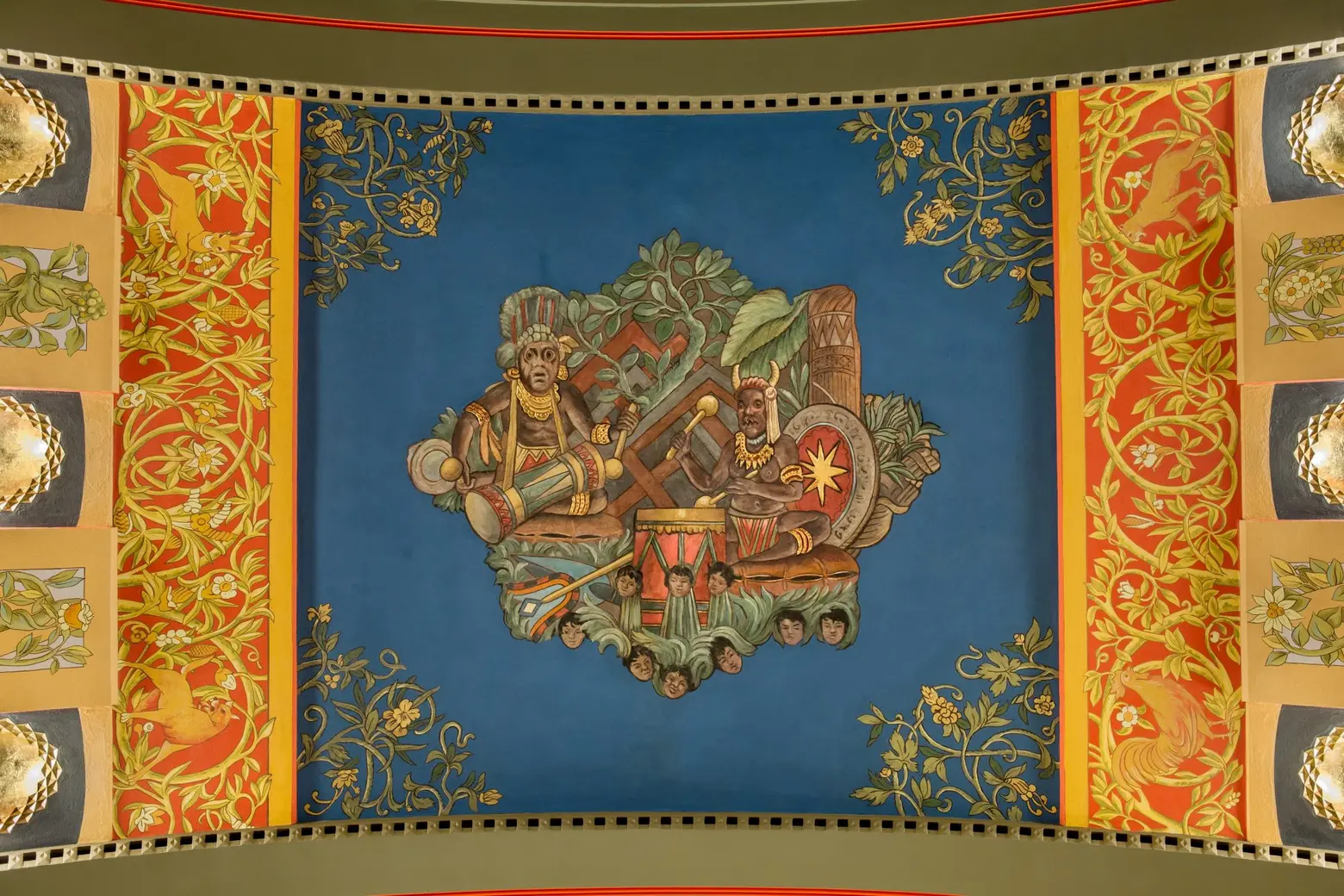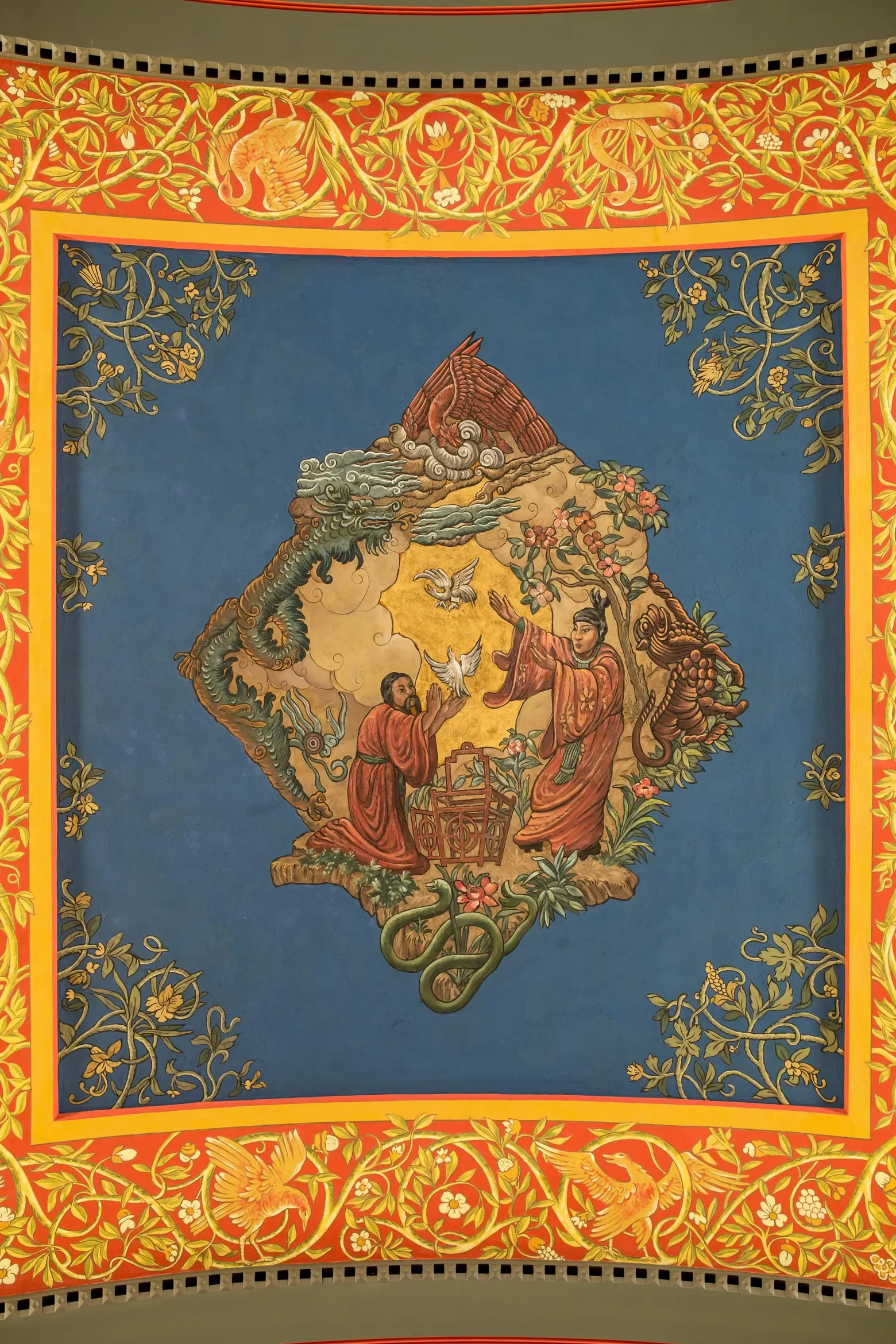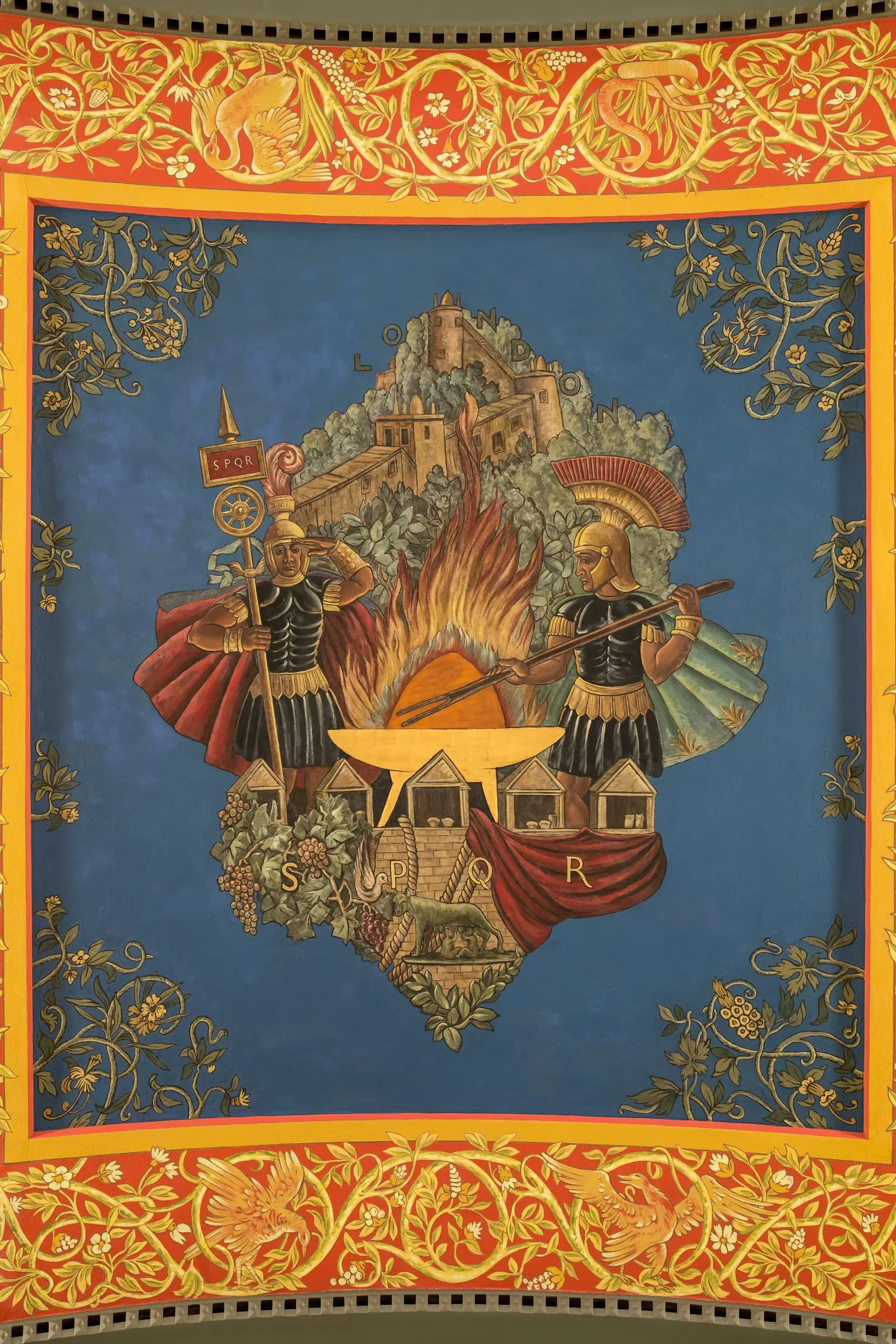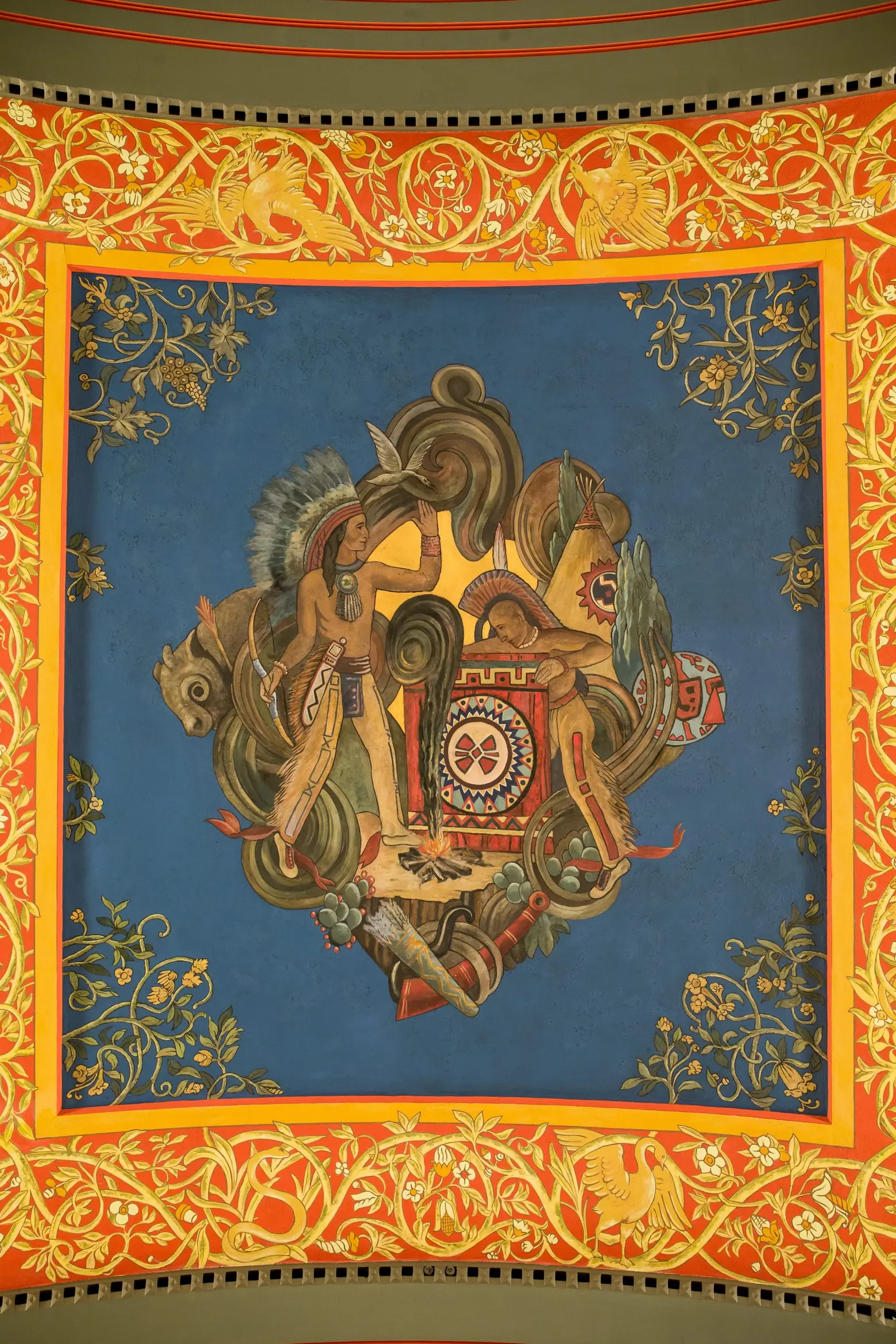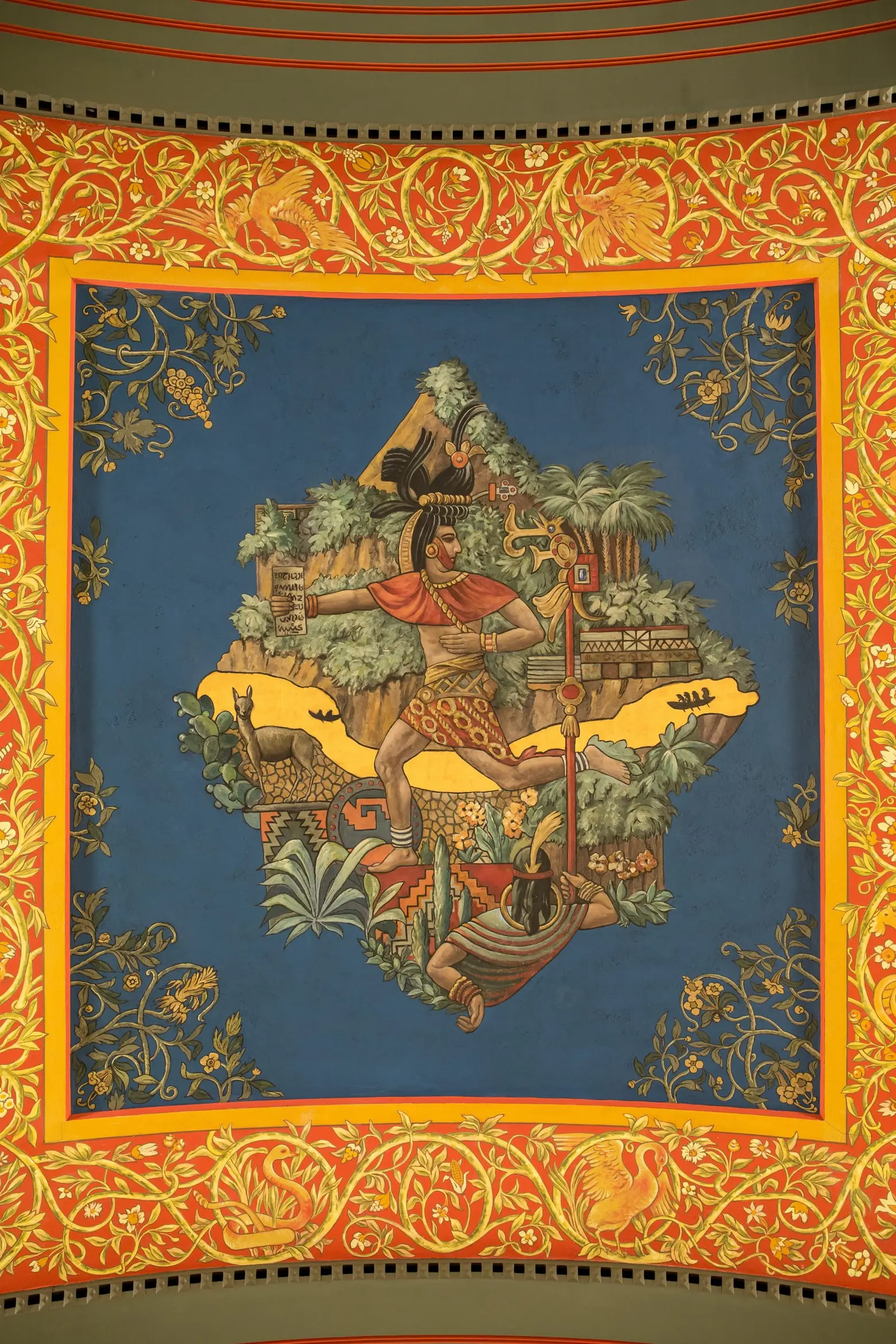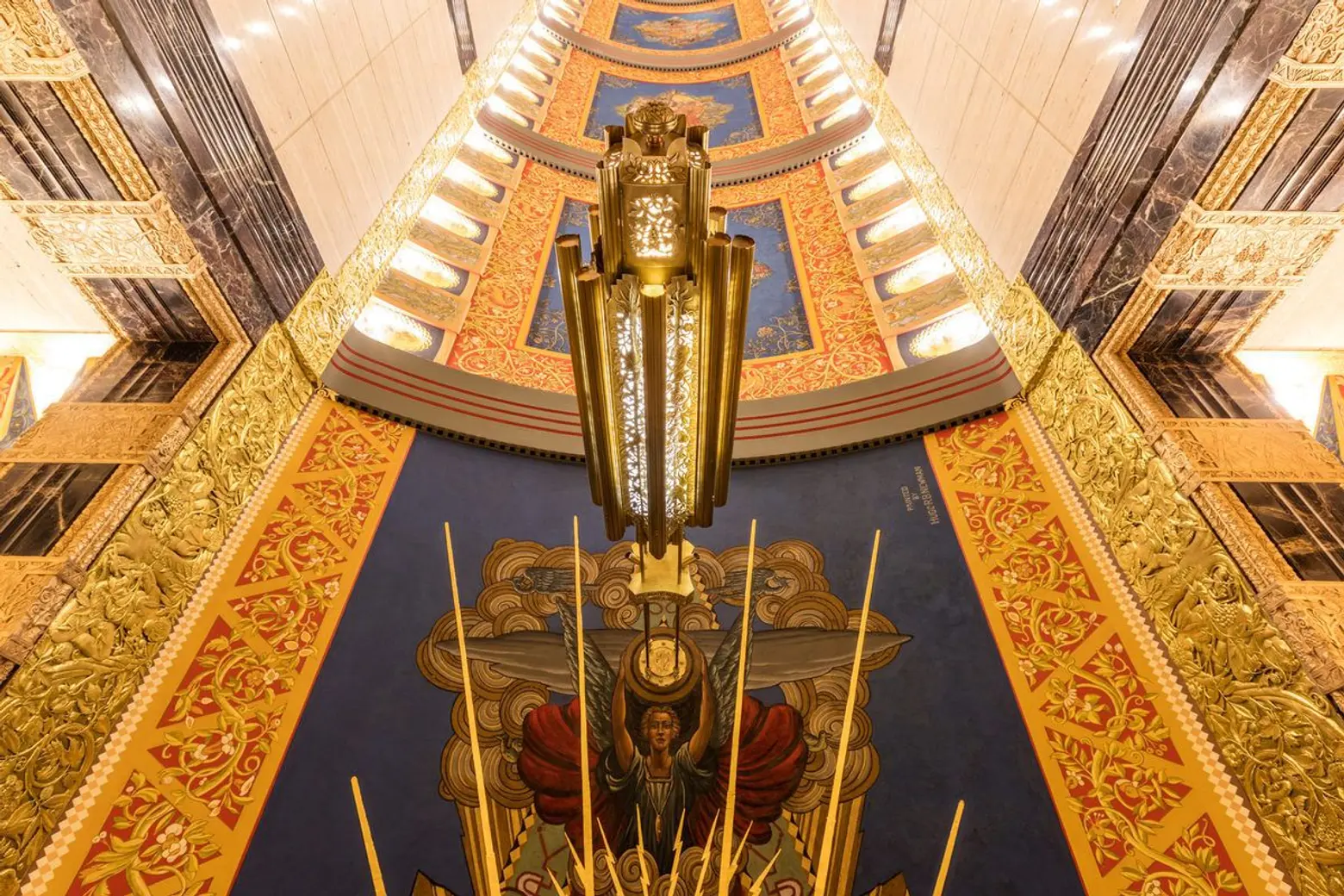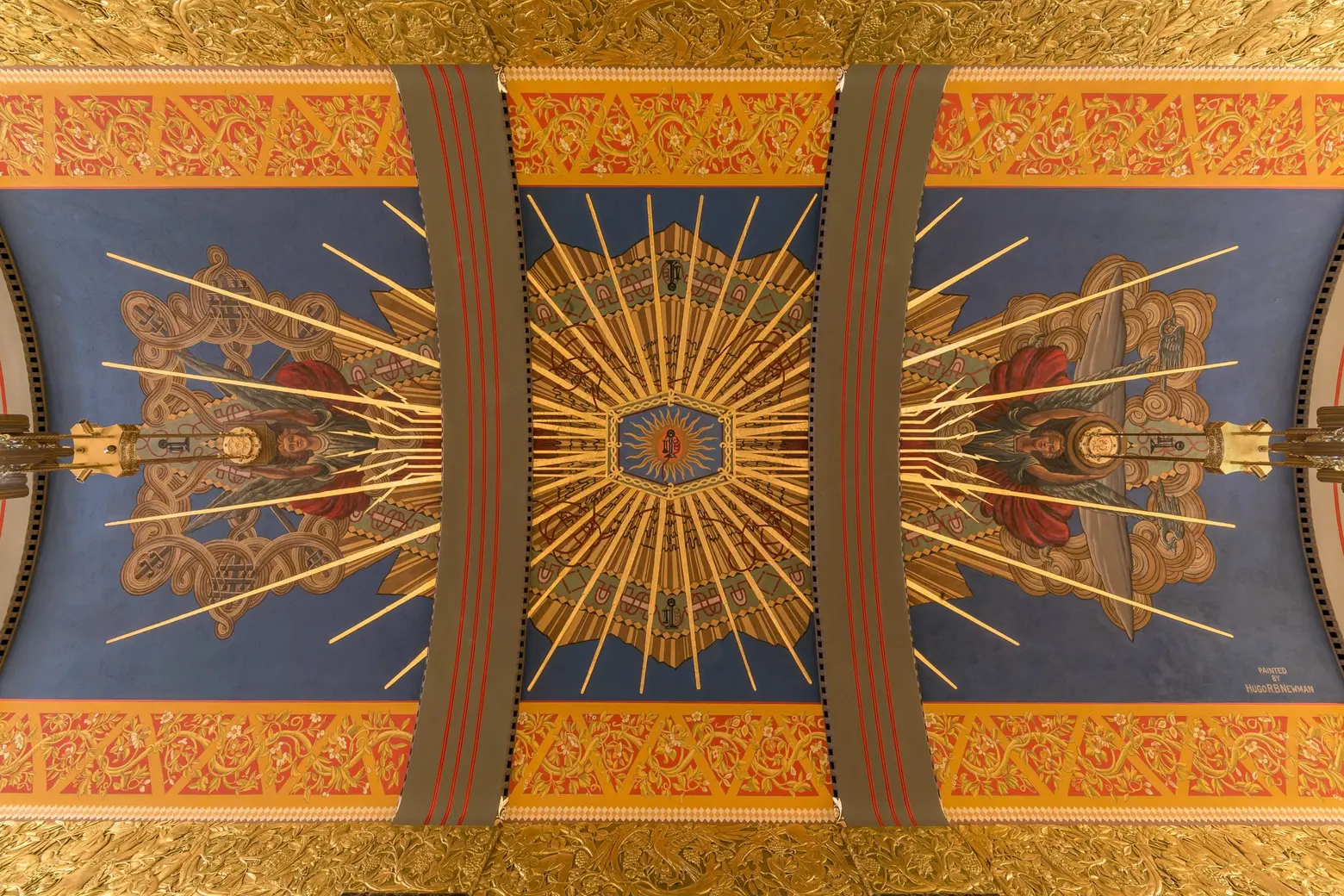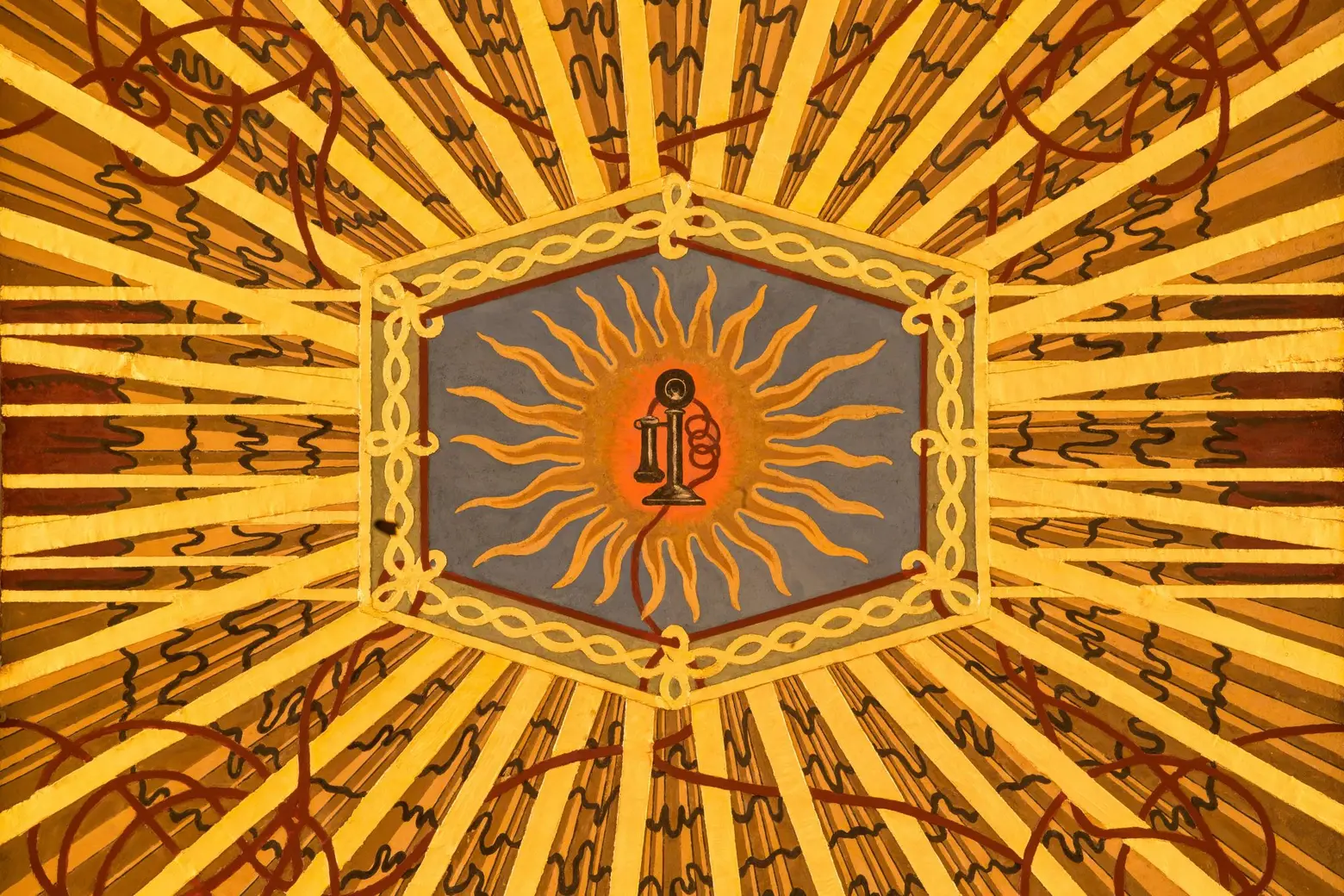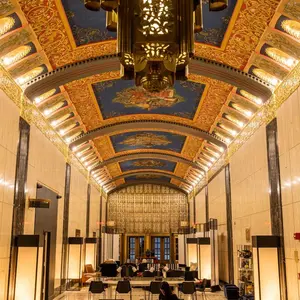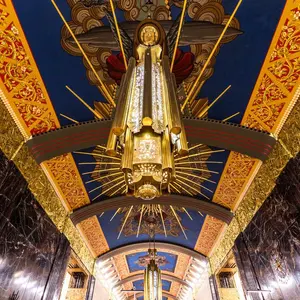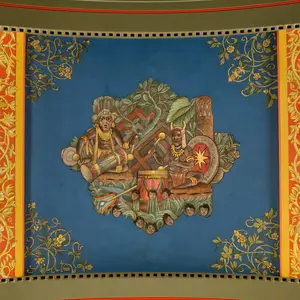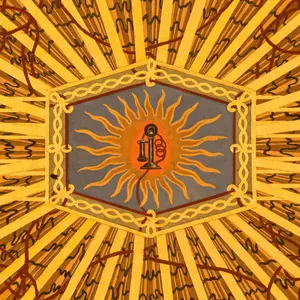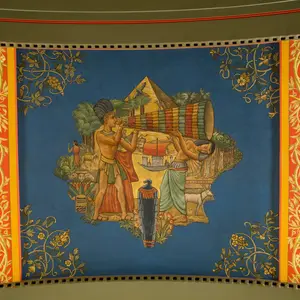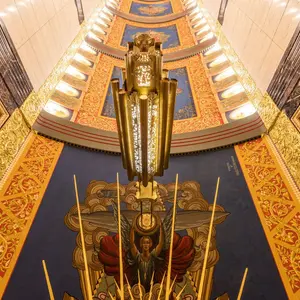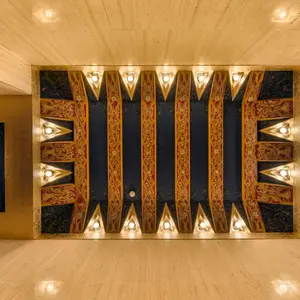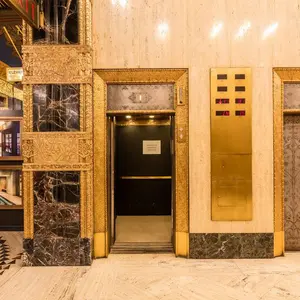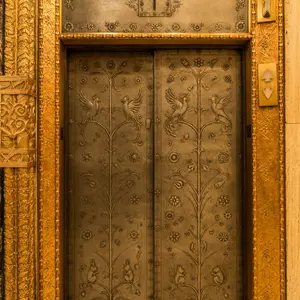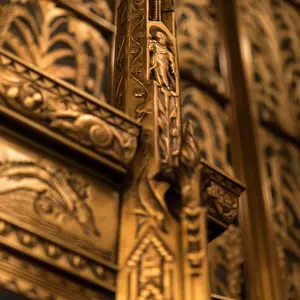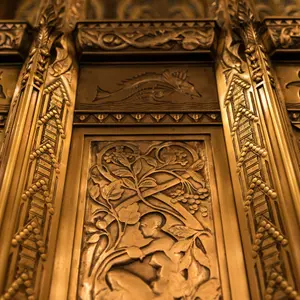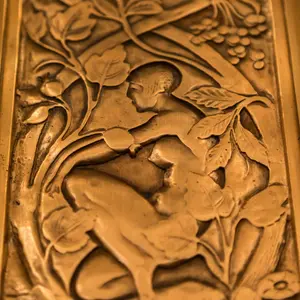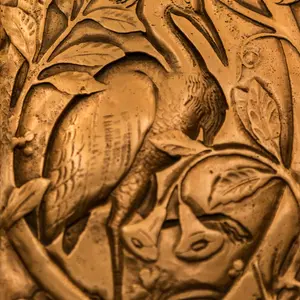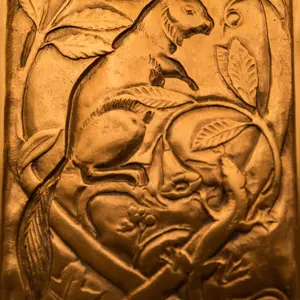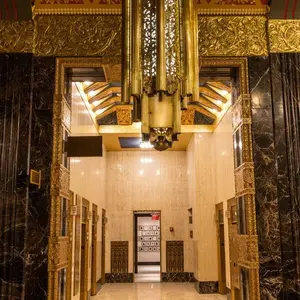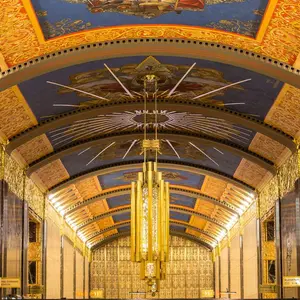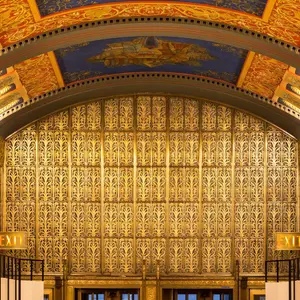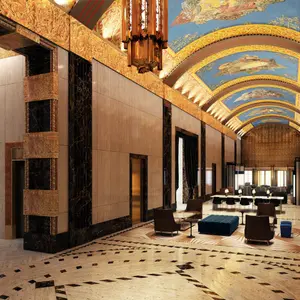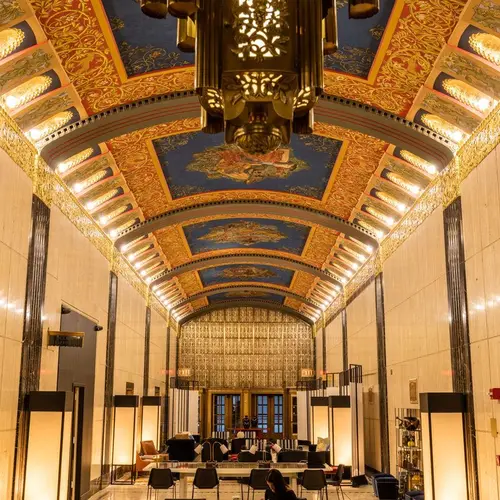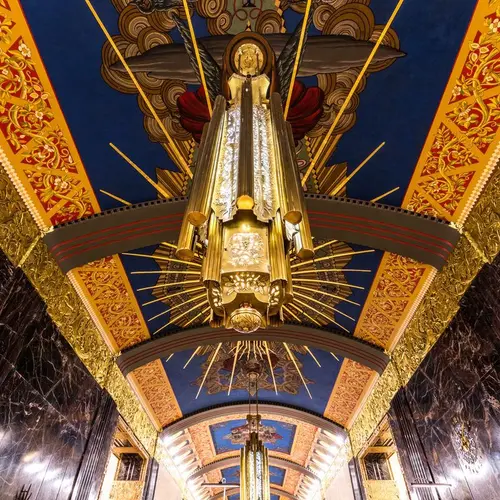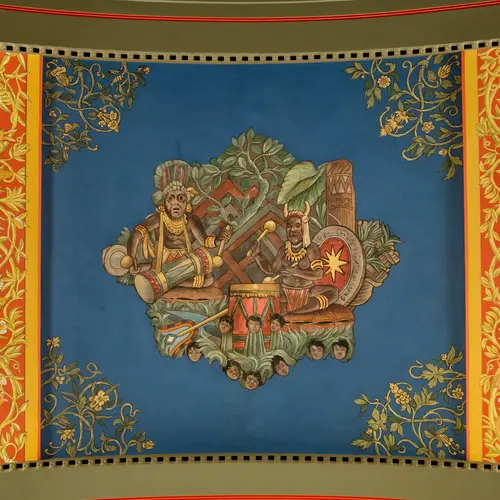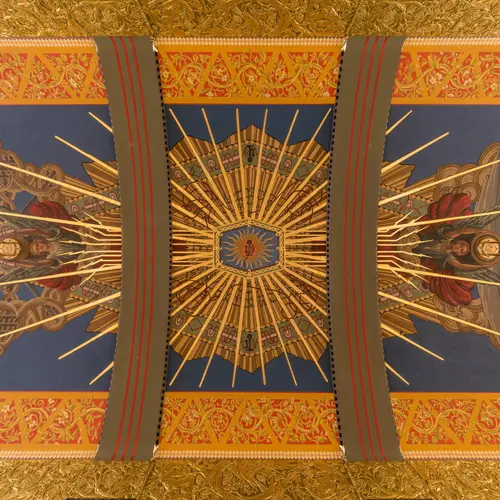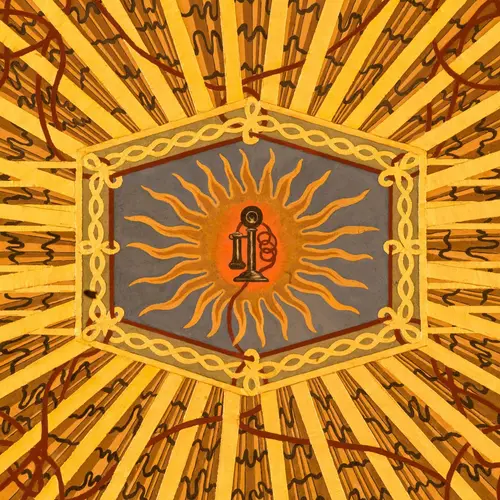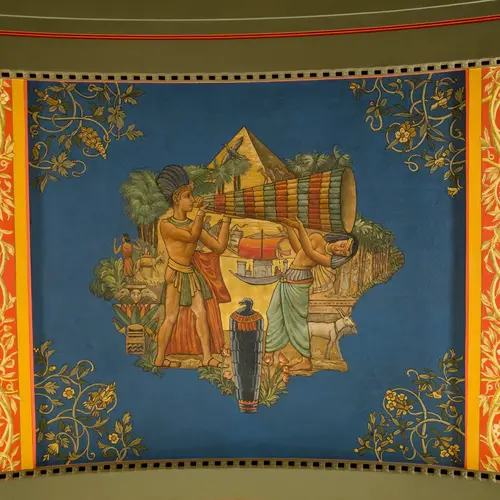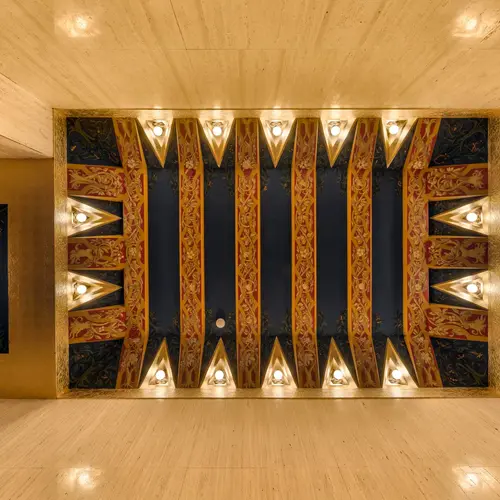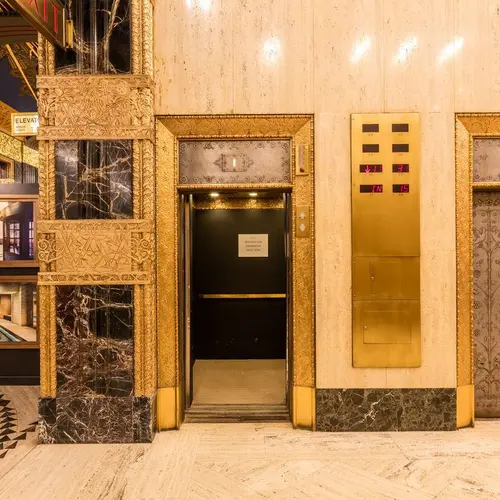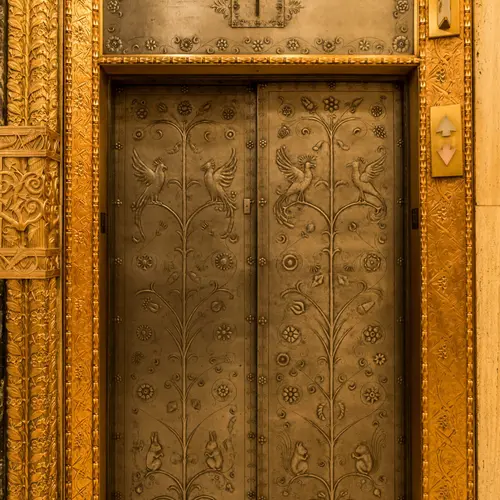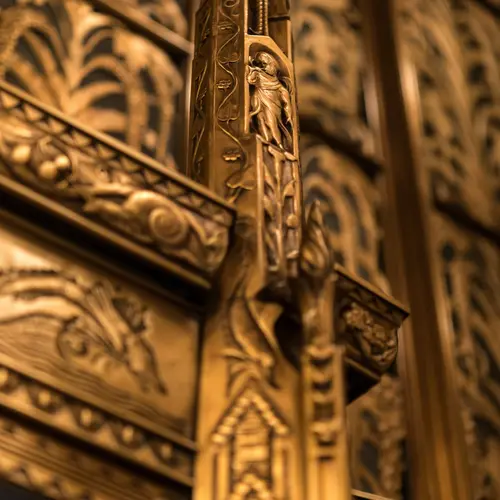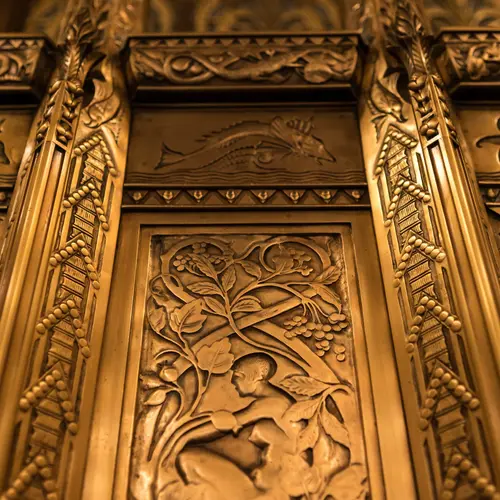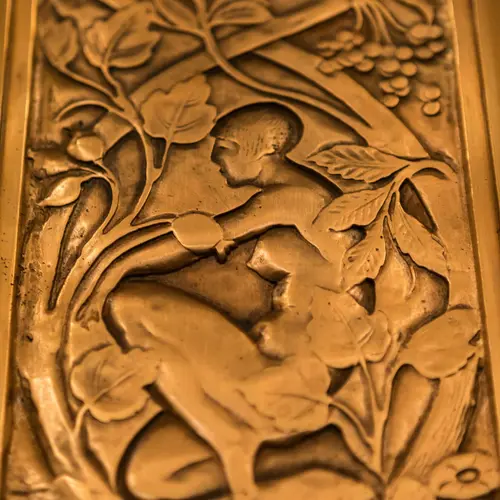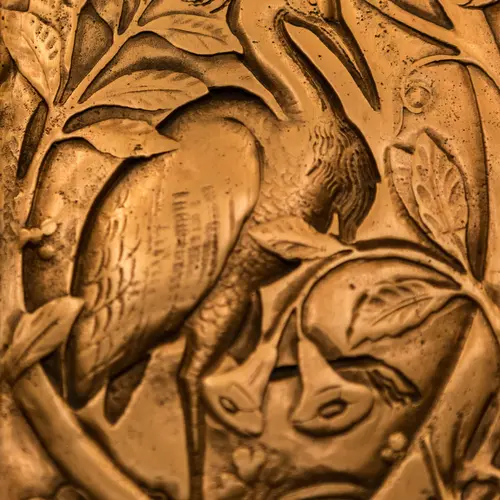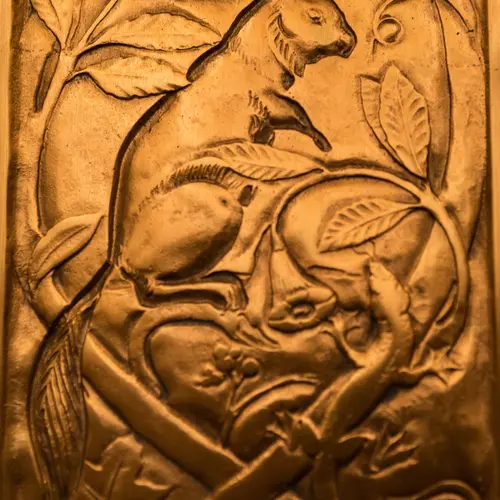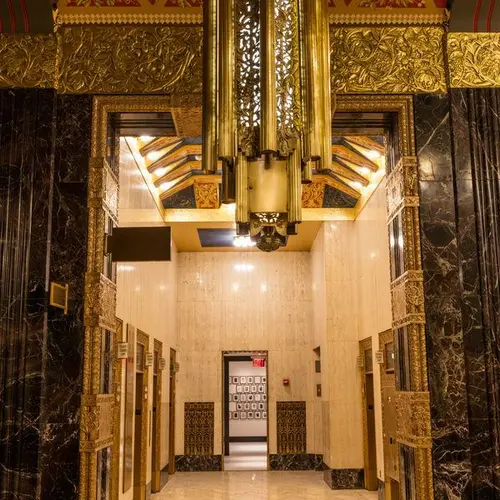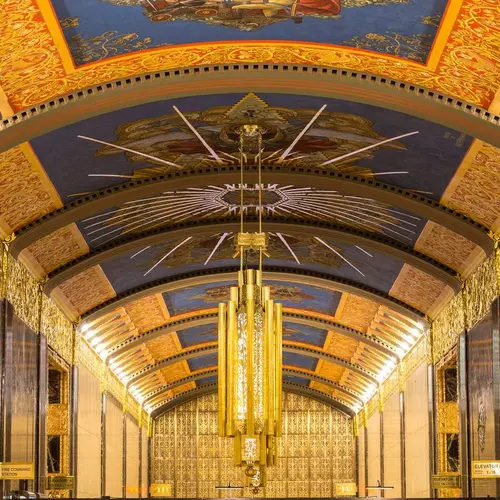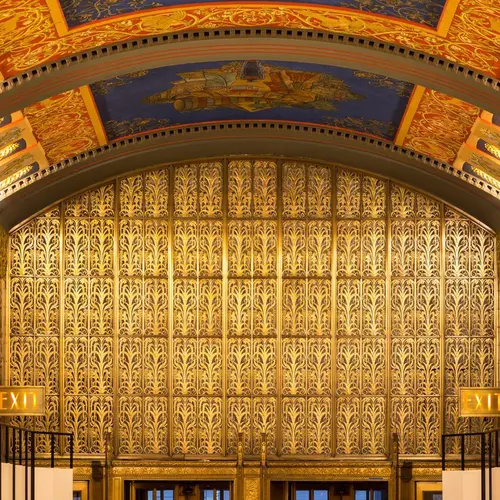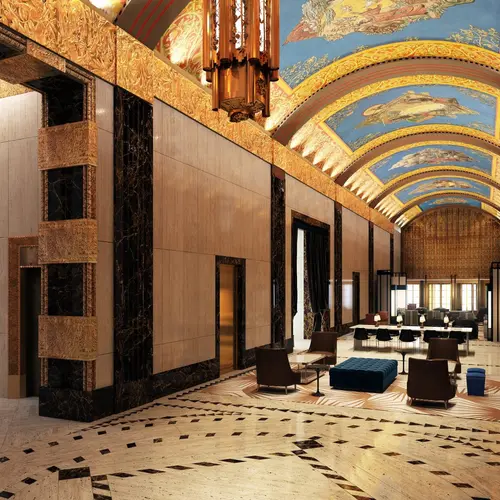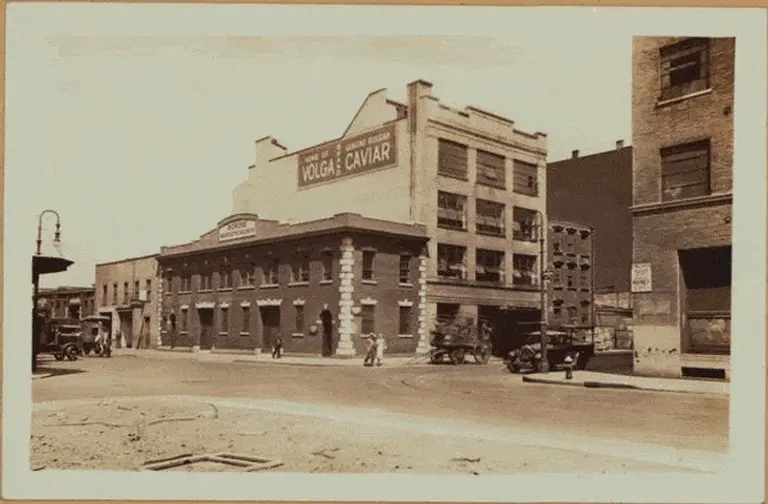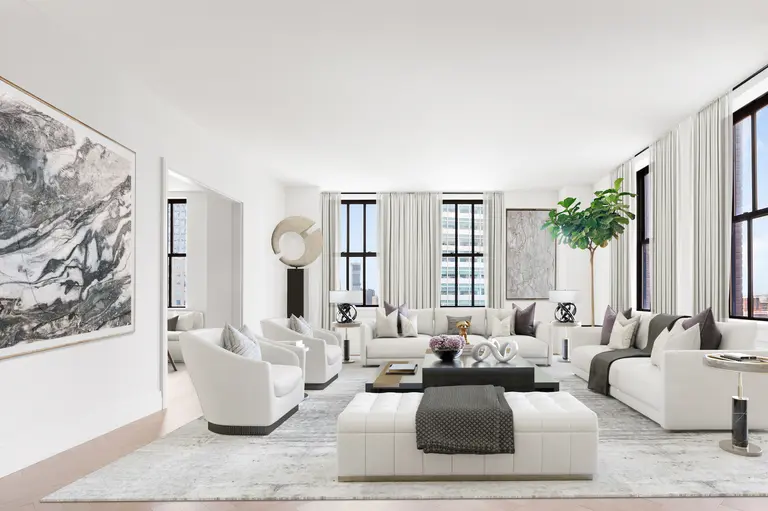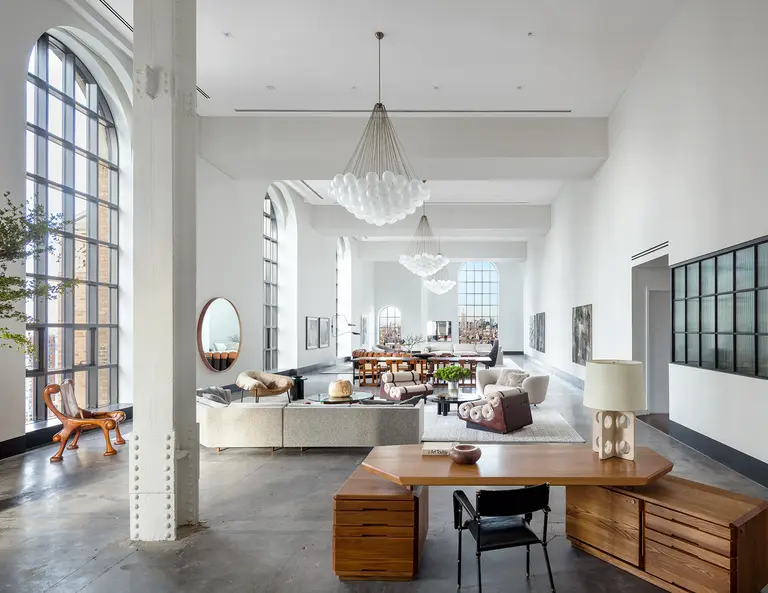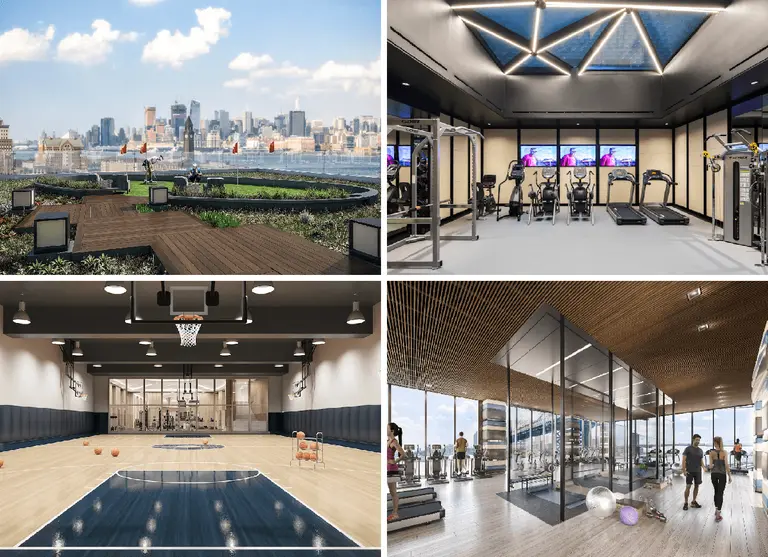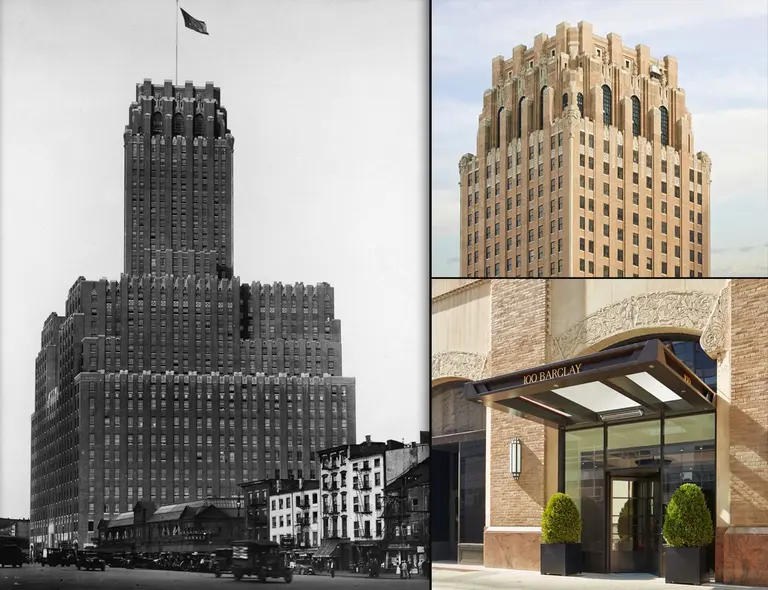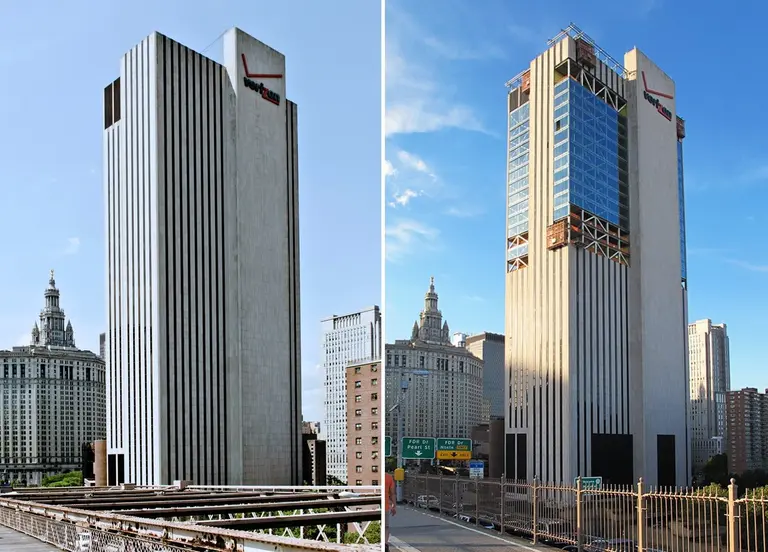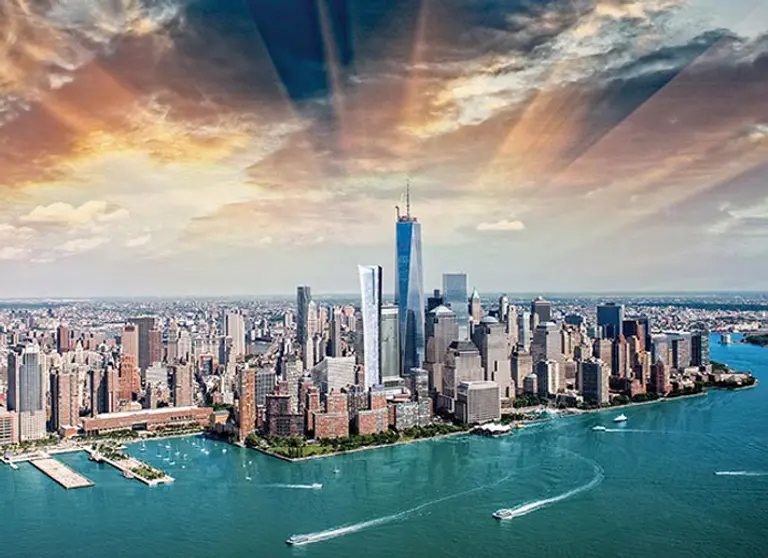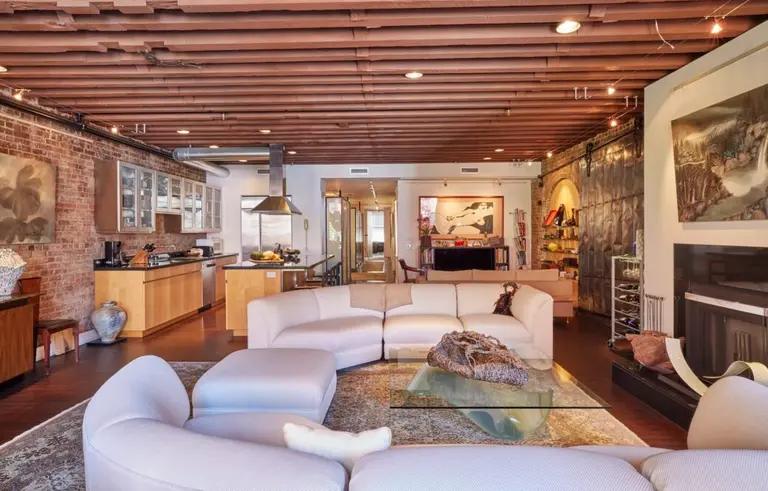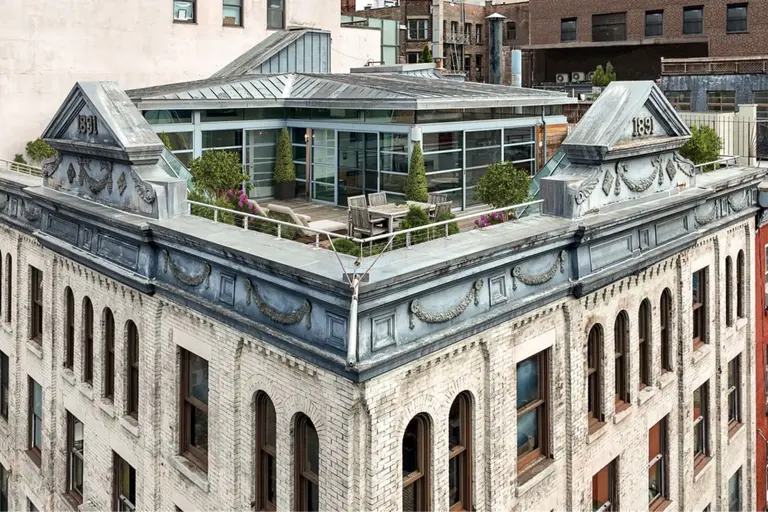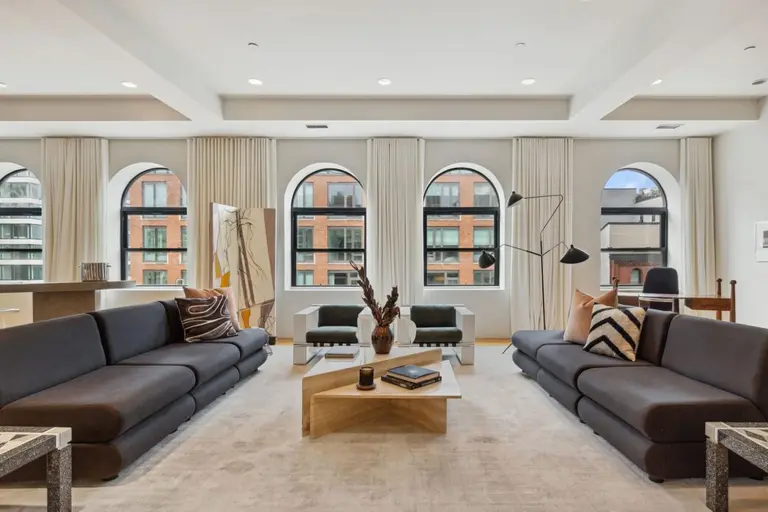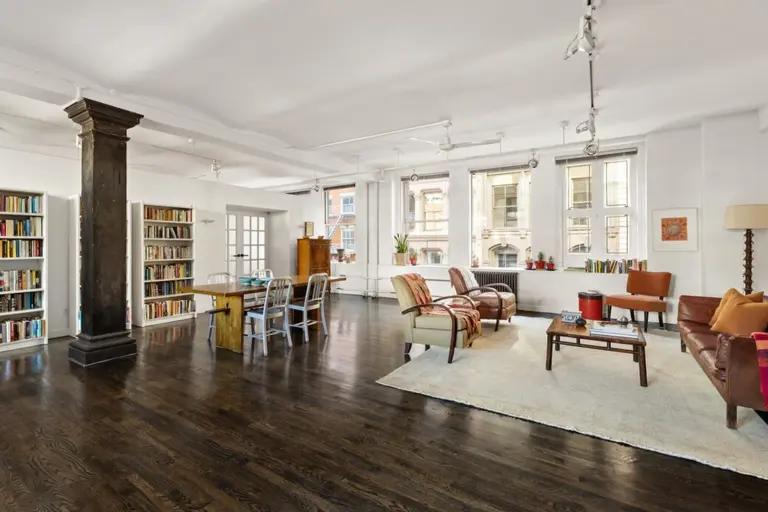Explore the history of human communication through 100 Barclay’s ceiling murals
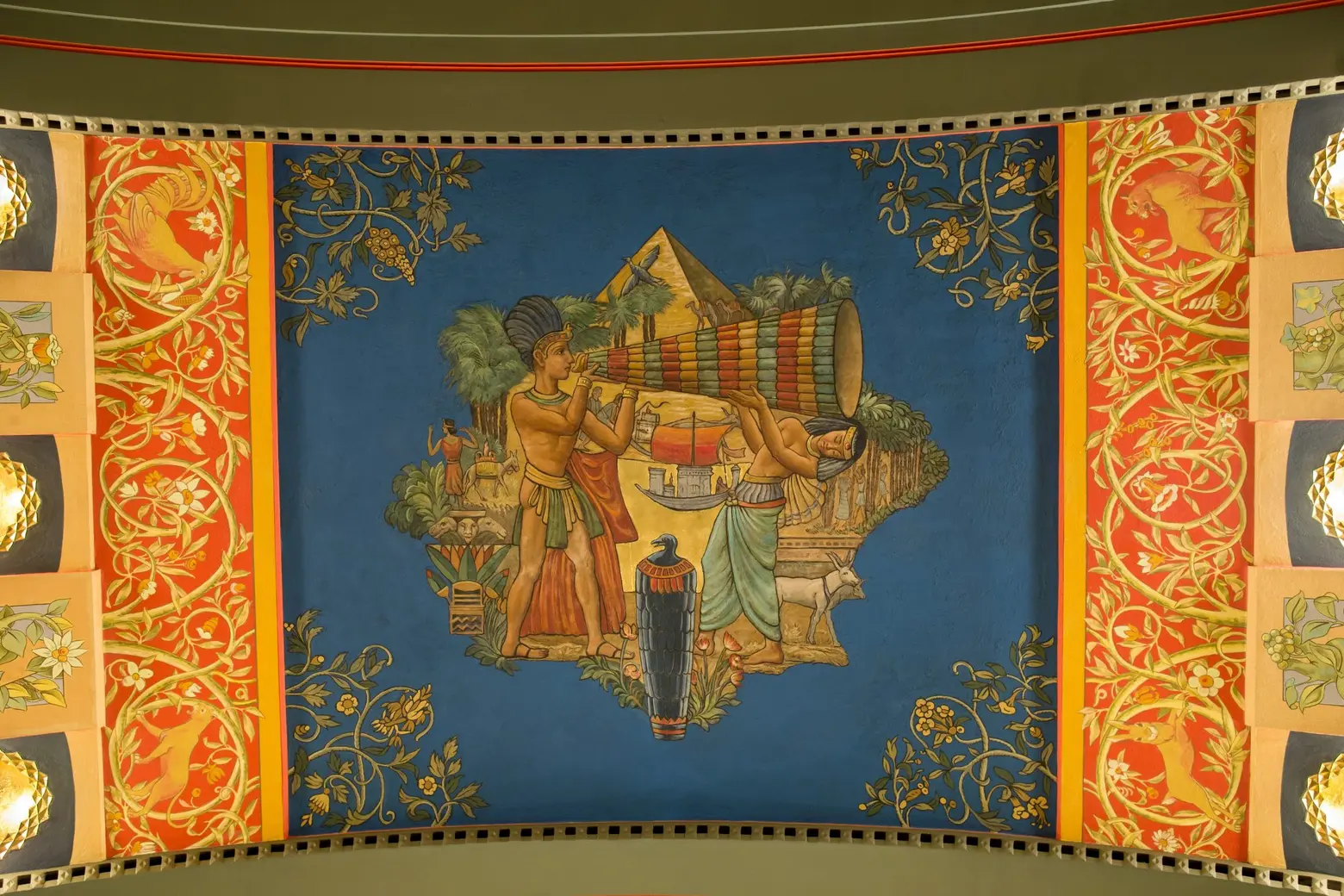
This post has been sponsored by 100 Barclay. To learn more about available condos or to schedule a tour, visit the official 100 Barclay website.
Much attention has been given to the landmarked 100 Barclay as of late thanks to a recent redevelopment of the upper floors into luxury apartments by Magnum Real Estate Group and the CIM Group. The full-block building, which sits on a site at the southern edge of Tribeca and just off the Hudson River waterfront, was originally constructed between 1923 and 1927 as the headquarters of the New York Telephone Company. Then known as the Barclay-Vesey Building (also the New York Telephone Building), the tower was the world’s first Art Deco skyscraper, designed by a young Ralph Walker while he was just an associate at McKenzie Voorhees & Gmelin. Walker’s design provided not only a launching pad for his own career (he soon after became a partner in his firm and later went on to become one of the country’s most esteemed architects) but the Barclay-Vesey would provide inspiration for many of New York’s future skyscrapers.
Rising 31 stories, 100 Barclay‘s exterior bulk was designed to convey strength, power, and success to those who encountered it. In creating the facade, Walker was inspired by Mayan architecture and the exterior features some very interesting ornamentation, including babies, plants, animal faces, and a bell above the main entrance; the bell symbol was the marker of the telephone company for which the structure was built.
While the building’s form is of monumental proportions, its landmarked lobby stands as an epic work of art and architecture, carrying the exterior aesthetic into the interior tenfold. Although standard in design today, establishing fluidity was not common with towers being built at the time. As the 1991 Landmarks Preservation Commission designation report notes: “Walker’s execution of a dramatic continuity between interior and exterior design was unusual; many contemporary buildings which appeared modern on the exterior still reverted to historical styles on the interior. Walker achieved this continuity in the Barclay-Vesey Building by carrying the spirit and character of the overall form of the building, as well as by extending the program of the exterior ornament to the interior.”
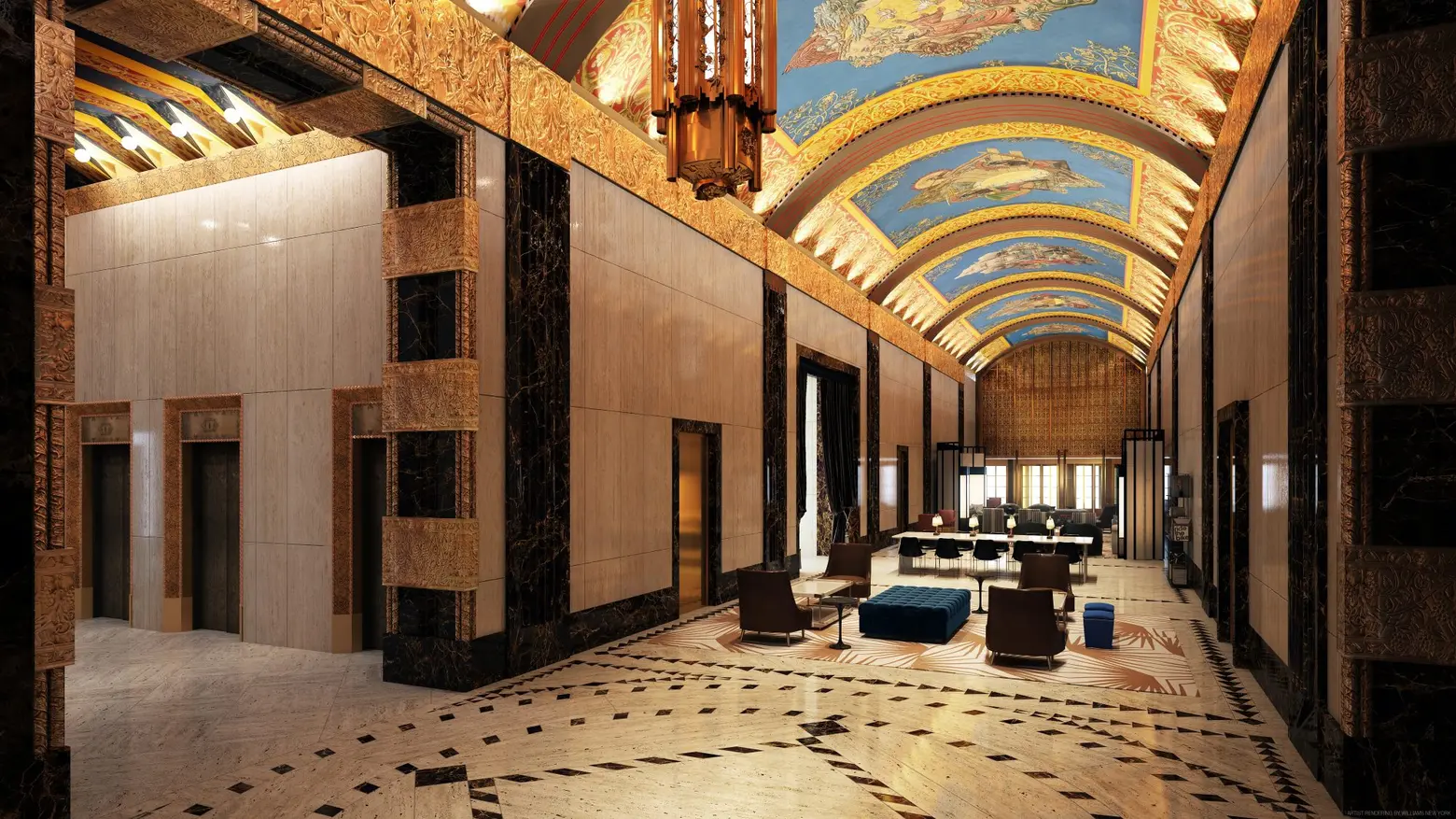
Indeed, the lavish 6,000-square-foot lobby takes the form of a long, decorative corridor stretching between two entrances with an alcove at the center leading to an elevator vestibule. The space drips with opulent Art Deco details and is decked out in travertine floors with inlaid bronze medallions, marble walls, and bronze ornamentation throughout.
Most notable, however, are the 12 massive murals by New York artist Hugo R.B. Newman which adorn the ceiling. Each has been hand-painted with gold leaf accents, and each panel completes a timeline depicting important technological advancements in the field of human communication. Looking up, you will see Aztec runners with letters in hand, carrier pigeons being released into the sky, a pair blowing smoke signals, and of course, the telephone. The scheme beautifully relates back to the function of the building (home to a telephone company) while also embodying man’s prowess and the machine age.
Architecture critic Lewis Mumford’s 1927 review of the skyscraper in the New Republic called the interior space the “greatest triumph” of the building.
Below, explore the lobby and the history of communication:
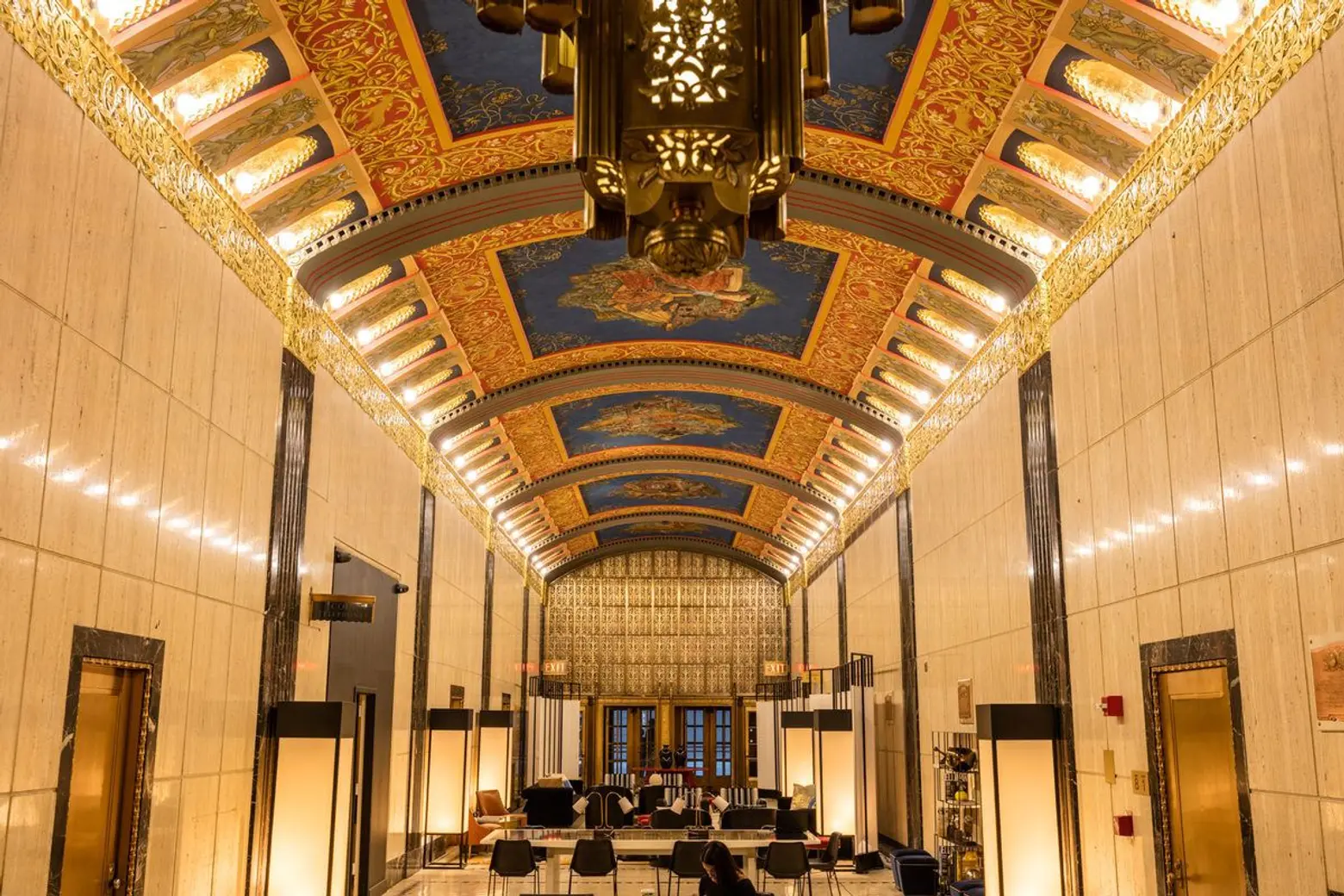
↑ Panels can be “read” from either end of the corridor.
↑ Starting at the western end you will see West Africans using drums as a way to communicate with nearby villages.
↑ In this scene, carrier pigeons are released by Chinese merchants.
↑ Ancient Greeks use reflectors to send signals.
↑ Here ancient Romans communicate with fire.
↑ If you are moving from the eastern end of the lobby, you’ll see a megaphone system used by the Egyptians in the first panel.
↑ Smoke signals sent by American Indians.
↑ On foot, an Aztec runner carries a letter.

↑ Medieval knights wave signal flags to communicate with one another.
↑ Signaling by a cannon on a wooden ship.
↑ Bronze chandeliers “hang” from the arms of angelic figures painted into to center panels. The lobby’s chandeliers are mini versions of the skyscraper and mirror the tower’s setbacks.
↑ The center three murals aim to depict the success of modern communication. In the middle, you’ll see a telephone lit up from behind. As written in the Landmarks designation report, “The shafts of light and intertwining wires which radiate from the middle to the side panels symbolize the linking of the telephone, telegraph, and radio and the ability to communicate with anyone, anywhere, by telephone.”
Painter Hugo R.B. Newman’s signature is in the corner of the mural.
+++
Photos by Evan Joseph for 100 Barclay
 This post has been sponsored by 100 Barclay. To learn more about available condos or to schedule a tour, visit the official 100 Barclay website.
This post has been sponsored by 100 Barclay. To learn more about available condos or to schedule a tour, visit the official 100 Barclay website.
+ Visit the official 100 Barclay site to explore the building further
+ 100 Barclay: Restoring and reinventing a historic Tribeca landmark
